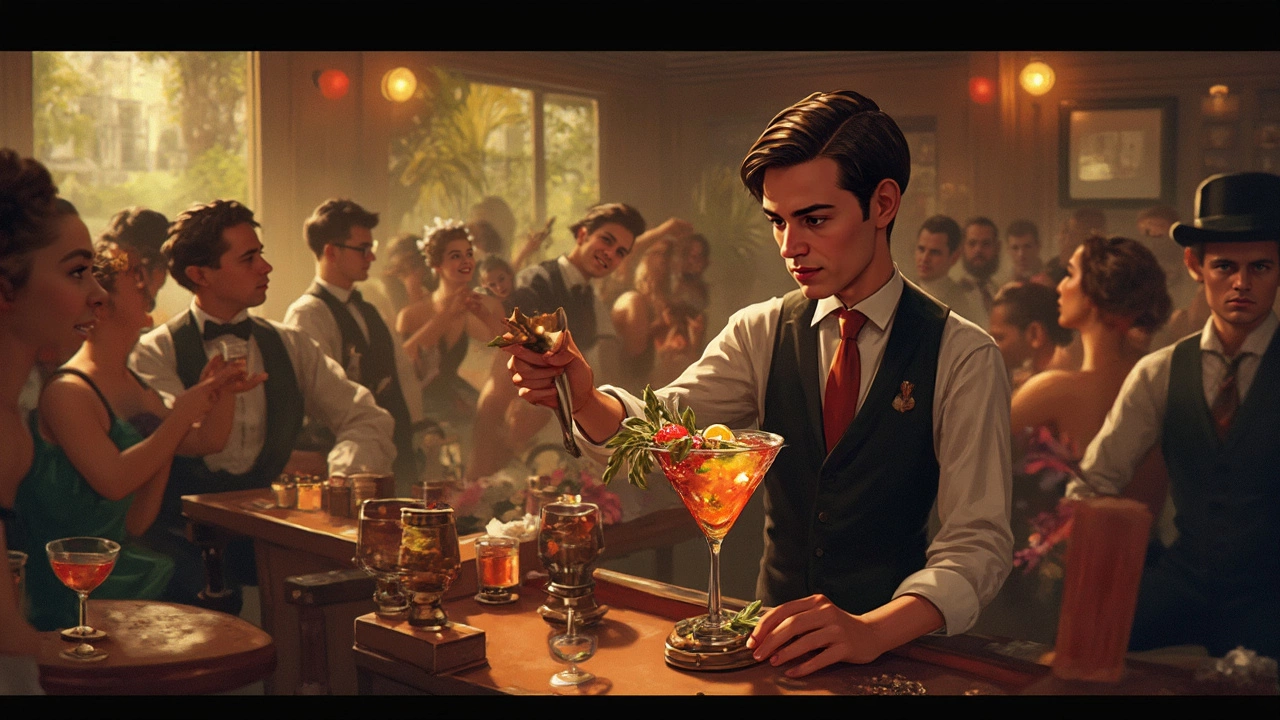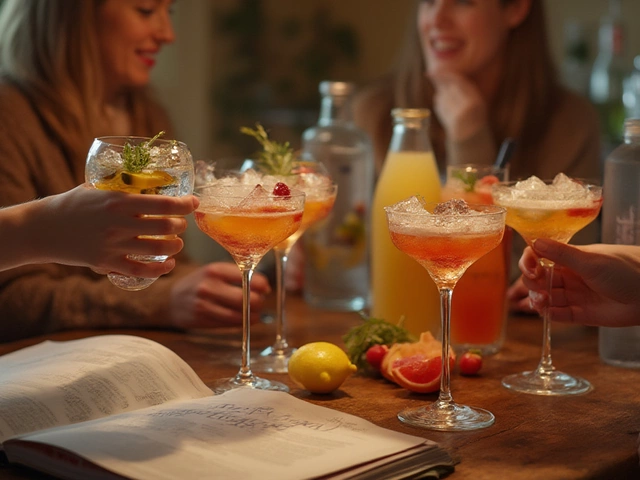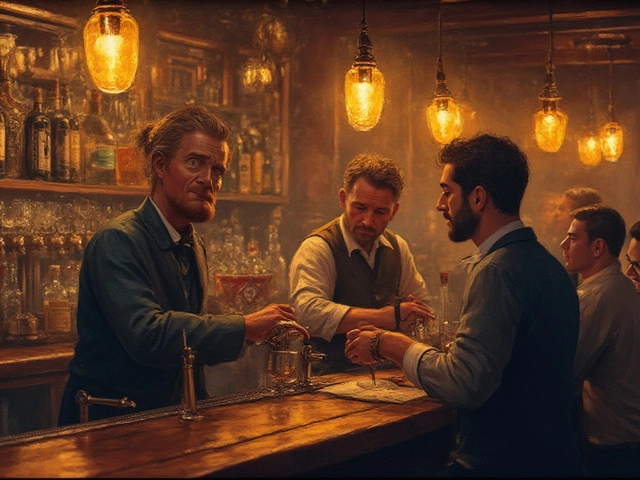Ever wondered where the idea of mocktails came from? It's not just a modern trend; it actually dates back to the days of Prohibition in the United States. When booze was banned, people still wanted to enjoy the social aspect of drinking, so creative minds came up with alcohol-free versions of popular cocktails. The idea gained traction, and soon enough, mocktails were born.
The Shirley Temple is often credited as one of the first mocktails. Named after the famous child actress, it combined ginger ale with grenadine, garnished with a cherry. It became so popular that even adults started ordering it, sparking a whole new wave of non-alcoholic drinks.
When you're mixing a mocktail, it's all about the balance and creativity. Finding the right blend of flavors is key. A simple yet classic example is combining citrus juices with soda or tonic water for a refreshing taste. Don't be afraid to experiment with herbs or spices, like mint or ginger - they can transform a simple drink into something extraordinary.
- History of the First Mocktail
- How It Earned Its Name
- Basic Ingredients and Recipes
- Modern Mocktail Trends
- Creative Tips for Your Own Mocktails
History of the First Mocktail
So, how did the first mocktail come to be? The roots of non-alcoholic beverages are deeply entwined with the Prohibition era in the United States, which ran from 1920 to 1933. Back then, alcohol was outlawed, but that didn't stop folks from wanting drinks that had the same social feel without the alcohol kick.
Picture this: speakeasies filled with people craving the lively atmosphere of saloons, minus the booze. This need gave rise to the invention of the mocktail, providing a semblance of normalcy for those who missed congregating over a drink. Bartenders started creating non-alcoholic versions of existing cocktails, allowing patrons to indulge in the taste without breaking the law.
Among the early versions was the Shirley Temple. Named after the adorable child star, this drink gave younger or non-drinking guests something fun to sip on. Combining ginger ale, grenadine, and a cherry garnish, it was not only alcohol-free but also looked and tasted special enough to feel like a treat.
Why the Name 'Mocktail'?
The term 'mocktail' didn't just appear overnight—it evolved as people wanted a catchy name for these non-alcoholic concoctions. Derived from 'mock,' meaning imitation, and 'cocktail,' the name perfectly captures what these drinks are all about—a fabulous cocktail experience with a sober twist.
With the rise of temperance and health-conscious movements, these drinks slowly made their way out of the secretive speakeasies into regular bars and households. Fast forward to today, and mocktails are a common choice for those who prefer substance over spirits, weaving their way into more refined and varied combinations with each passing year.
How It Earned Its Name
The term mocktail is a clever blend of the words "mock" and "cocktail." It's all about capturing the essence of a cocktail without the booze. During the Prohibition era, people started craving the social and sensory experience of a cocktail but without breaking the law. That's when mocktails swooped in, mimicking the taste and appearance of their alcoholic counterparts.
The word "mock" itself signifies imitation, and with cocktails being a popular social element, it made perfect sense. By creating non-alcoholic versions, people could enjoy similar flavors and presentation without the alcohol. This wasn't just a practical choice; it was about adapting to social settings where everyone could partake in the fun.
The name caught on, seamlessly fitting into language without any fuss. Bars and restaurants quickly adopted the concept, and it wasn't long before mocktails became a fixture in menus everywhere. Fast forward to today, and mocktails are celebrated for their creativity and inclusivity.
Interestingly, the rise of mocktails in modern times can also be seen as a response to the growing interest in health and wellness. As people become more mindful about their drinking habits, having a varied and exciting selection of non-alcoholic drinks allows everyone to feel part of the celebration, regardless of their drinking preferences.
So, the next time you enjoy a delicious non-alcoholic drink, you're not just savoring a beverage; you're partaking in a piece of history that cleverly bridges the gap between social desires and personal choices.
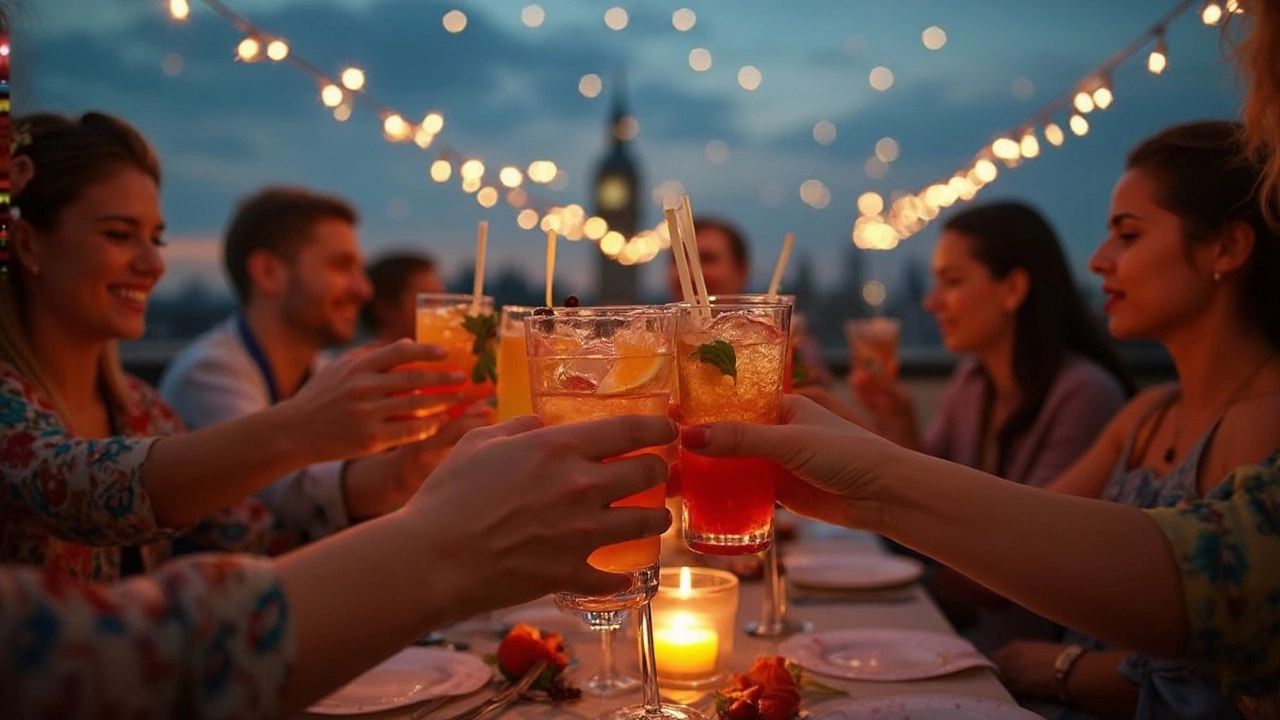
Basic Ingredients and Recipes
When diving into the world of mocktails, knowing your way around the basic ingredients is the first step to creating a delicious alcohol-free drink. Just because there's no alcohol doesn't mean a mocktail can't be a bold mix of flavors, with each ingredient playing a vital part in the overall taste.
The Essentials
- Fruits and Juices: They're the backbone of most mocktail recipes. Think fresh citrus like lemons, limes, and oranges, or opt for tropical choices like pineapple and mango for a sweeter touch.
- Syrups: Grenadine and simple syrup are common players. Creating your own infusions, like a lavender or rosemary syrup, can add a unique twist.
- Sodas and Sparkling Water: Adding fizz to your drink can elevate it. Ginger ale, tonic water, or even a flavored soda works wonders.
- Herbs and Spices: Fresh mint, basil, or ginger can provide an aromatic punch. Don't be intimidated by a pinch of cinnamon or a splash of vanilla extract either.
Classic Mocktail Recipes
Let’s put those ingredients to use! Here are a couple of easy and classic recipes to get you started:
Shirley Temple
- Fill a glass with ice cubes.
- Add 3 oz of ginger ale and 3 oz of lemon-lime soda.
- Pour a splash of grenadine over the top.
- Garnish with a maraschino cherry and a slice of orange.
Virgin Mojito
- Muddle a handful of fresh mint leaves and 1/2 a lime (cut into wedges) in a glass.
- Fill with ice and add 2 oz of simple syrup.
- Top it off with club soda or sparkling water.
- Stir gently and garnish with a lime wedge and more mint.
Creating a mocktail is all about hitting the right balance. Adjust to taste as you go. Whether it's making your beverage sweeter, adding more citrus, or stepping up the fizz, the choice is yours! Feel free to experiment and add your personal touch to each recipe.
Modern Mocktail Trends
These days, mocktails are not just an option for designated drivers or those avoiding alcohol. They've become a real art form in the world of beverage crafting. The trend is all about creativity, health, and sustainability. Bartenders are continually pushing the boundaries, crafting drinks that aren't just non-alcoholic, but downright impressive.
Focus on Fresh and Organic Ingredients
One major trend is the use of fresh, local, and organic ingredients. People are more health-conscious than ever, and they want their drinks to reflect that. Instead of sugary syrups and artificial flavors, mocktails now often feature fresh fruit juices, herbs, and spices. This not only boosts flavor but also adds vital nutrients.
Experimentation with Flavors and Textures
Mixologists love playing with flavors, and strong emphasis is placed on unique pairings. Don't be surprised to find mocktails with ingredients like elderflower, kombucha, or exotic fruits. Beyond flavors, textures are also a focus. You might find drinks featuring ingredients like chia seeds or coconut milk to alter the mouthfeel.
Zero-Proof Spirits
Enter zero-proof spirits. These are beverages crafted to mimic the complexities of alcohol without the buzz. They often boast tasting notes similar to traditional spirits. They're great for providing the 'wow' factor without the alcohol.
Here's some interesting data on mocktail popularity:
| Year | Global Market Growth (%) |
|---|---|
| 2020 | 9 |
| 2022 | 11 |
| 2024 | 14 |
DIY Mocktail Creations
The DIY trend has taken off, too. People love creating their own recipes at home. It's about personalization and having control over what you're consuming. Plus, it's just fun experimenting with different ingredients to see what you can come up with.
If you're thinking of jumping in on the trend, start by trying different bases, like tea or coconut water, with your favorite juicy fruits or herbs. You might be surprised at how something simple can taste so refreshing.
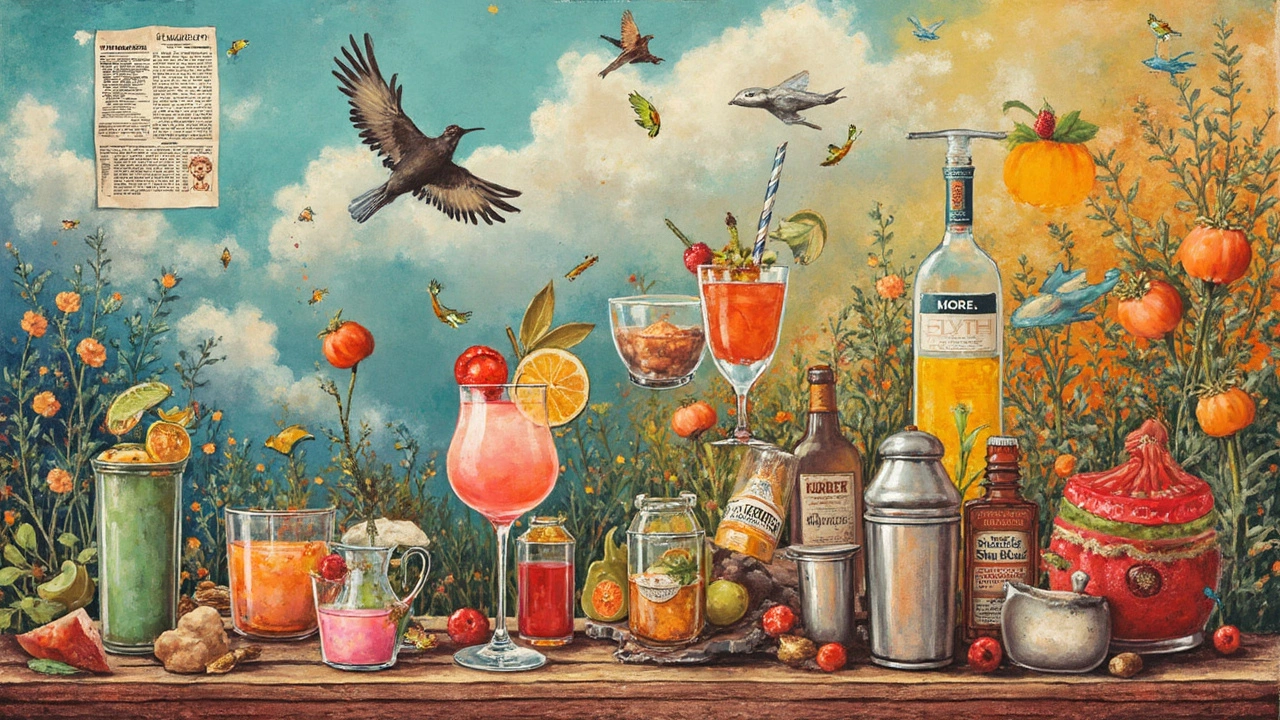
Creative Tips for Your Own Mocktails
Want to become a mocktail master? Let’s dive into some tips that’ll make your non-alcoholic drinks the star of the show. First off, think about using seasonal ingredients. They’re fresh, delicious, and often cheaper. Whether it’s winter spices or summer berries, fresh ingredients make a huge difference in taste.
Layering Flavors
When you’re crafting the perfect mocktail, layering flavors can be a game-changer. Start with a base like club soda or tonic water, and then add juice for sweetness or tartness. Fresh herbs like mint or basil can add a kick. Don’t be shy about experimenting—sometimes the strangest combos turn out the best.
Presentation is Key
Don’t underestimate the power of presentation. Jazzing up your drink with creative garnishes can make it memorable. Use fruit slices, colorful straws, or even edible flowers to give your non-alcoholic drink some flair.
Sugar and Spice
Balancing the sweetness is crucial, so think about the sugars you’re using. Instead of plain sugar, try honey or agave syrup. For a little spice, a hint of ginger or a sprinkle of cayenne can surprise your taste buds.
Getting the Right Mix
Stirring isn’t just a step; it’s where the magic happens. Too much shaking can make the mix watery, while too little can leave it bland. Find the right balance for the perfect sip every time.
If you're curious how your mocktail measures up to others, here's a little guideline for a balanced drink:
| Element | Quantity |
|---|---|
| Base | 3/4 |
| Sweetener | 1/4 |
| Acid | 1/4 |
| Herbs/Spices | to taste |
These tips will guide you, but remember there are no strict rules. The best part is you get to taste and tweak until it’s just right. Happy mixing!
